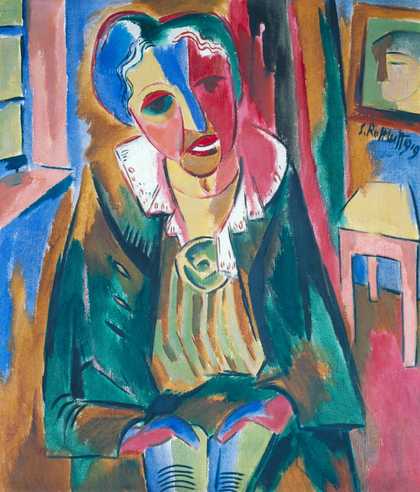
Karl Schmidt-Rottluff
Dr Rosa Schapire (1919)
Tate
There were two main groups of German expressionist artists: Die Brücke (the bridge) led by Ernst Ludwig Kirchner, and Der Blaue Reiter (The Blue Rider) led by Wassily Kandinsky and Franz Marc.
German expressionism was an early twentieth century German art movement that emphasized the artist's inner feelings or ideas over replicating reality, and was characterised by simplified shapes, bright colours and gestural marks or brushstrokes

Karl Schmidt-Rottluff
Dr Rosa Schapire (1919)
Tate
There were two main groups of German expressionist artists: Die Brücke (the bridge) led by Ernst Ludwig Kirchner, and Der Blaue Reiter (The Blue Rider) led by Wassily Kandinsky and Franz Marc.